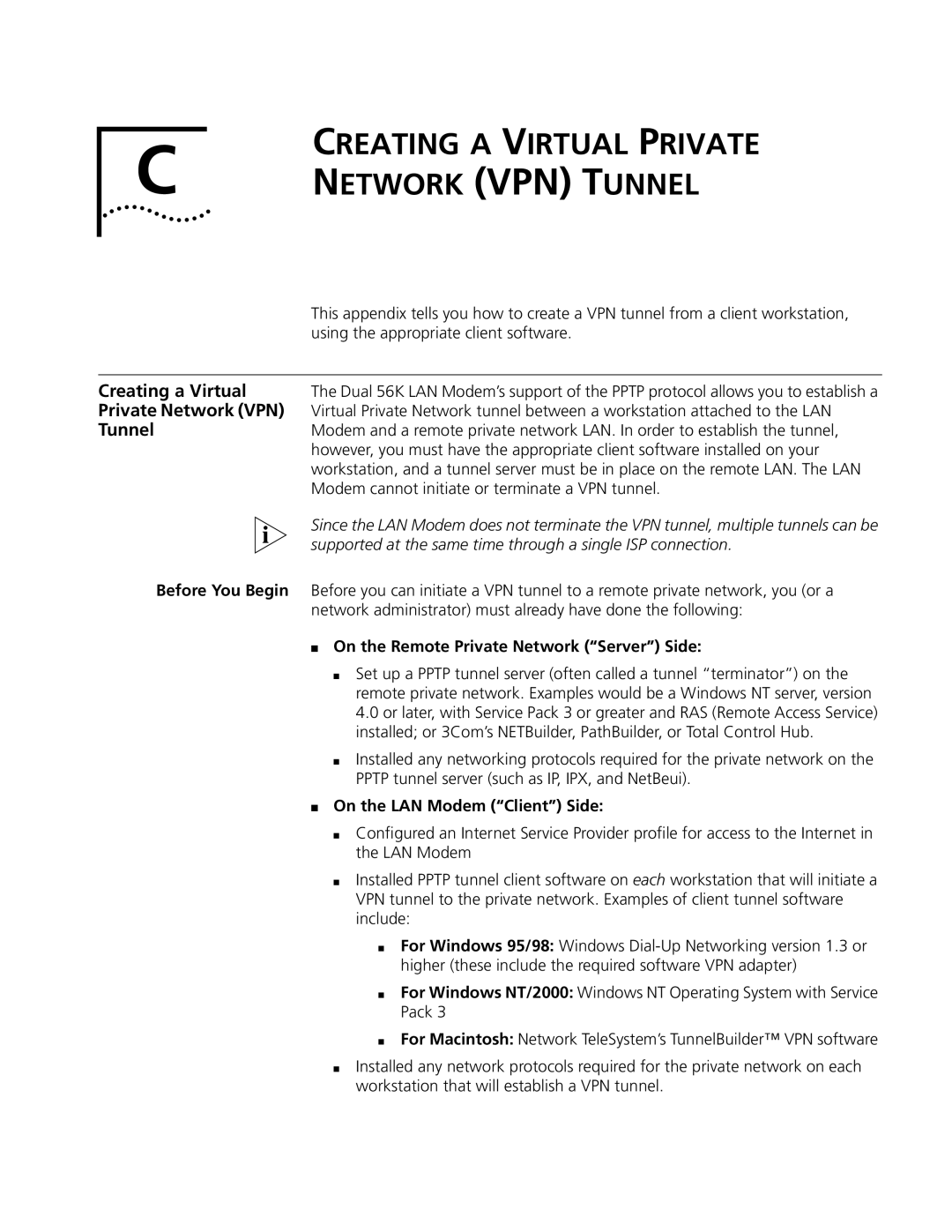
CREATING A VIRTUAL PRIVATE
C NETWORK (VPN) TUNNEL
| This appendix tells you how to create a VPN tunnel from a client workstation, |
| using the appropriate client software. |
|
|
Creating a Virtual | The Dual 56K LAN Modem’s support of the PPTP protocol allows you to establish a |
Private Network (VPN) | Virtual Private Network tunnel between a workstation attached to the LAN |
Tunnel | Modem and a remote private network LAN. In order to establish the tunnel, |
| however, you must have the appropriate client software installed on your |
workstation, and a tunnel server must be in place on the remote LAN. The LAN Modem cannot initiate or terminate a VPN tunnel.
Since the LAN Modem does not terminate the VPN tunnel, multiple tunnels can be supported at the same time through a single ISP connection.
Before You Begin Before you can initiate a VPN tunnel to a remote private network, you (or a network administrator) must already have done the following:
■ On the Remote Private Network (“Server”) Side:
■ Set up a PPTP tunnel server (often called a tunnel “terminator”) on the remote private network. Examples would be a Windows NT server, version 4.0 or later, with Service Pack 3 or greater and RAS (Remote Access Service) installed; or 3Com’s NETBuilder, PathBuilder, or Total Control Hub.
■ Installed any networking protocols required for the private network on the PPTP tunnel server (such as IP, IPX, and NetBeui).
■ On the LAN Modem (“Client”) Side:
■ Configured an Internet Service Provider profile for access to the Internet in the LAN Modem
■ Installed PPTP tunnel client software on each workstation that will initiate a VPN tunnel to the private network. Examples of client tunnel software include:
■ For Windows 95/98: Windows
■ For Windows NT/2000: Windows NT Operating System with Service Pack 3
■ For Macintosh: Network TeleSystem’s TunnelBuilder™ VPN software
■ Installed any network protocols required for the private network on each workstation that will establish a VPN tunnel.
